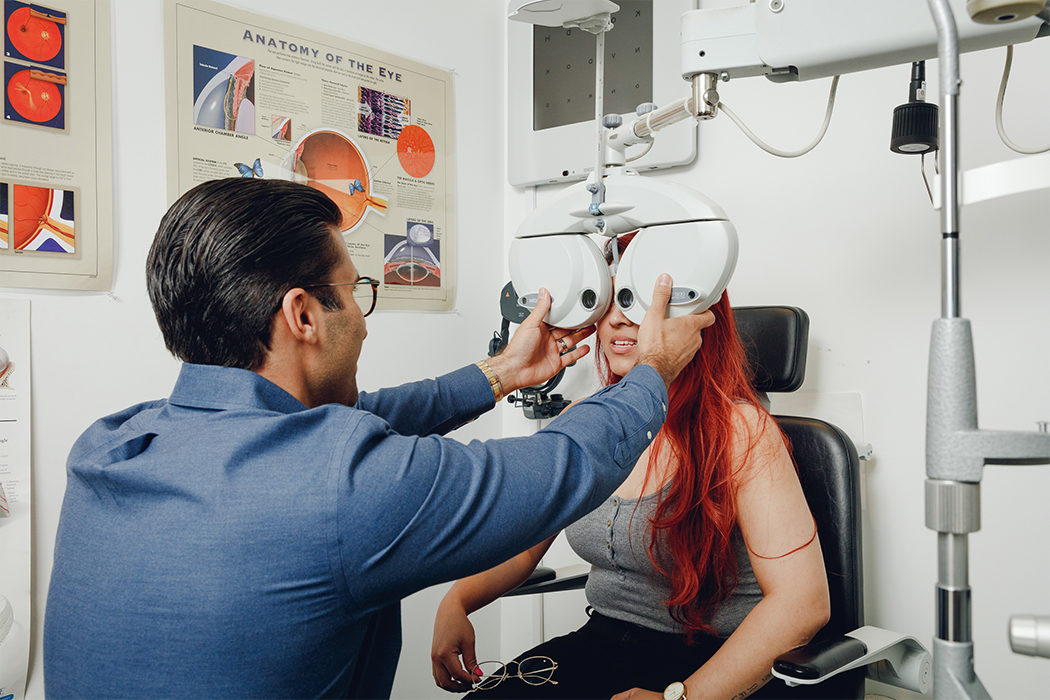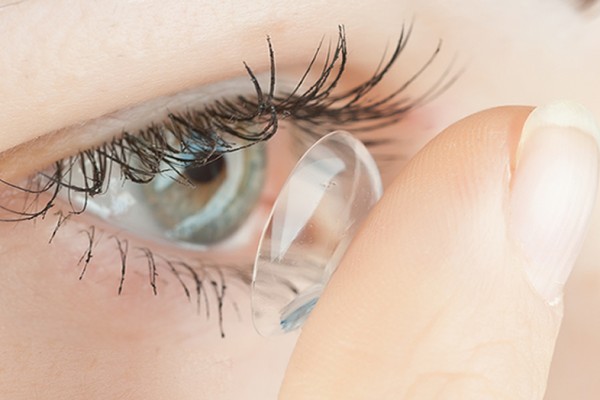This post is also available in:
![]() Français (French)
Français (French)
Routine eye exams assess much more than how clearly you read the chart in front of you. During a comprehensive eye exam, certain tests (pupil dilation in particular) enable your eye doctor to see what’s going on with your eyes as well as your overall health.
This makes it possible to detect and treat many serious health conditions, including diabetes, Parkinson’s disease and various cancers.
The following are eight things your eye exam can tell you about your overall health:
1. Diabetes
The number one cause of blindness in American adults is a condition called diabetic retinopathy. This eye disease stresses tiny capillaries in the retina, which causes a yellow fluid or blood to leak in the back of the eye. Eye doctors are able to see this during an exam and can respond accordingly with treatment and increased exam frequency.
Eye pain, blurry vision and floaters are also symptoms of the condition but often aren’t noticeable until later, during more advanced stages of the disease. Silent symptoms during early phases of diabetic retinopathy, as with many eye diseases, are why regular eye exams are exceedingly important.
There are some instances in which an eye doctor noticed symptoms of diabetic retinopathy before the patient had even been diagnosed with diabetes. These examples of preemptive diagnosis allowed patients a chance to begin lifestyle changes and treatment before the condition could progress.
2. Brain tumours
Detecting a brain tumour during an eye exam is a rare occurrence, but it is possible.
Eye doctors can see your optic nerve during an exam and check it for discolouration or swelling. If either of these abnormal characteristics is present, it can be a sign of infection or disease in the brain or optic nerve.
External symptoms of a brain tumour are double vision, changes in field of vision and abnormal pupil size — like having different-sized pupils or if a pupil stays one size permanently (will not dilate or contract).
If your eye doctor recognizes any of these symptoms, they’ll likely refer you to a neurologist for an MRI.
3. High blood pressure
In Canada alone, one in four adults has high blood pressure. Just because hypertension is common does not mean you should take it lightly. High blood pressure can lead to several serious health issues including heart attack, stroke and heart failure.
High blood pressure can also damage blood vessels, which can cause issues like blurred vision and even blindness if not treated.
Eye doctors will keep a lookout for any swelling, stiffening, narrowing or leaking of the blood vessels. These are common signs of high blood pressure and will alert your doctor that lifestyle changes and decisions on medication need to be made.
4. Arthritis
A quarter of those diagnosed with rheumatoid arthritis (RA) experience dry eyes. The severity of the dry eyes can vary from inconvenience to critical, as infection is more likely to develop in dry eyes.
Another telltale sign of rheumatoid arthritis is frequent iritis — inflammation of the iris, or coloured part of the eye. If an individual has two of these flare-ups within a year, or three within 18 months, it’s a strong indicator of RA.
If you have an inflammatory form of arthritis, you may be more likely to struggle with eye irritation, light sensitivity, reduced or blurred vision, or even conditions like glaucoma and/or cataracts.
5. Multiple sclerosis
Multiple sclerosis (MS) is an autoimmune disease that affects the central nervous system, which is made up of the brain, spinal cord and optic nerves. As the disease deteriorates your optic nerves, they begin to swell and cause your vision to blur — referred to as optic neuritis.
Although optic neuritis does not always lead to a diagnosis of MS, the two are often linked. Approximately 75% of individuals who have MS also experience optic neuritis, and it’s commonly the first symptom to arise during the beginning stages of MS.
If an eye doctor notices signs of MS during an exam, proactive measures for diagnosis and treatment can be taken.
6. Stroke
The health of your retinas can tip your eye doctor off to a number of health issues, one of which is the risk of stroke.
Warning signs of stroke risk include tiny clots or damage in the retinal blood vessels. These are normally caused by high blood pressure and indicate to your eye doctor that preventive measures need to be taken.
If these warning signs are present during your exam, your doctor may issue multiple tests that provide more detail on your specific case and identify the best route to prevention.
7. Parkinson’s disease
A great amount of research has been done to discover how to detect and diagnose Parkinson’s disease early. Researchers in South Korea determined that a simple eye exam may detect early signs of the neurological condition.
Thinning of the retina may be linked to symptoms of Parkinson’s. When a patient with Parkinson’s disease experiences a loss of dopamine, a brain chemical that sends messages to other nerve cells, it can cause their retinas to thin out.
An eye doctor can assess the integrity of your retinas during a comprehensive eye exam. If they seem to be thinning, it could be an indication of the beginnings of Parkinson’s.
As of right now, there is no cure for Parkinson’s, but there are medications and other treatments available that can help ease and manage symptoms, especially if started early.
8. Cancer
Regardless of where the cancer is focused, your eyes are often one of the first places to show signs that something is wrong.
An eye exam can reveal signs of everything from skin cancer to blood cancer. If there is hemorrhaging (blood) in the retinas, it can indicate leukemia, and a change in eye colour can be a sign of ocular melanoma.
The skin surrounding your eyes will also be examined for dark spots, new freckles and other signs that could be suspicious. You’ll likely be referred to a specialist if anything problematic is noticed in or near your eyes.
When is the last time you had an eye exam?
For the benefit of your eye health and your overall health, you should have your eyes examined every one to two years. Caring for your eyes regularly can detect early signs of several overall health issues that can be prevented.
As the saying goes, “Prevention is better than cure.” If you have a family history of eye disease, or health conditions such as diabetes or high blood pressure, you should schedule an eye exam at an earlier age. If you’re not currently under the care of an eye doctor, you should check out our stores to find an eye doctor near you.
Read more:

































